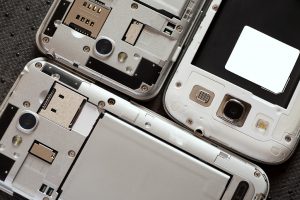 A lithium-ion battery expert says smartphone reuse trends will hamper the ability to use mobile device batteries as a major source of cobalt.
A lithium-ion battery expert says smartphone reuse trends will hamper the ability to use mobile device batteries as a major source of cobalt.
Hans Eric Melin, managing director of consultancy Creation Inn, recently authored a report on lithium-ion battery recovery. He also wrote an article about factors hampering battery recovery from smartphones.
Samsung recently announced its intention to recover cobalt from smartphone lithium-ion batteries, given the skyrocketing price of the metal and pressure to move away from sourcing conflict minerals from the Congo.
Currently, used smartphones that are recovered are often moved through take-back programs, the majority of which route the devices to China for refurbishment, according to Melin. In China, they’ll be worked on and sent to used device stores based on their quality.
“Broken phones will be used for spare parts in phones in better condition or to be sold on the local component markets,” Melin wrote. “Phones with heavy wear and tear will go to the domestic market or to markets like Africa and … Southeast Asian countries.”
That means a great deal of used smartphones are not available for commodity recovery, according to the report. And when they are no longer suitable for reuse, Chinese recycling companies and battery manufacturers stand to benefit, not their counterparts in North America and Europe.
Melin advises the development of local reuse markets and ways to channel devices into those markets, if smartphone batteries are to be used as a serious cobalt supply for new battery production.
“Technologies, services and legislation that can enable local reuse would not only create value through new products and services but also secure access to batteries for recycling,” Melin wrote.
The report also includes some significant figures on battery generation and recovery. It estimates 823,000 metric tons of lithium-ion batteries will be placed on the market this year, and that 168,000 metric tons will reach end of life. Some 70,000 metric tons of those batteries will be available for recycling, and only 10,000 metric tons will be processed in North America and Europe.
Photo credit: Glevalex/Shutterstock
More stories about metals
- Analysis: DOE takes equity stake in Lithium Americas deal
- Aurubis steps up recycling investments in US, EU
- Ex-Glencore chief starts Valor to refine critical metals


